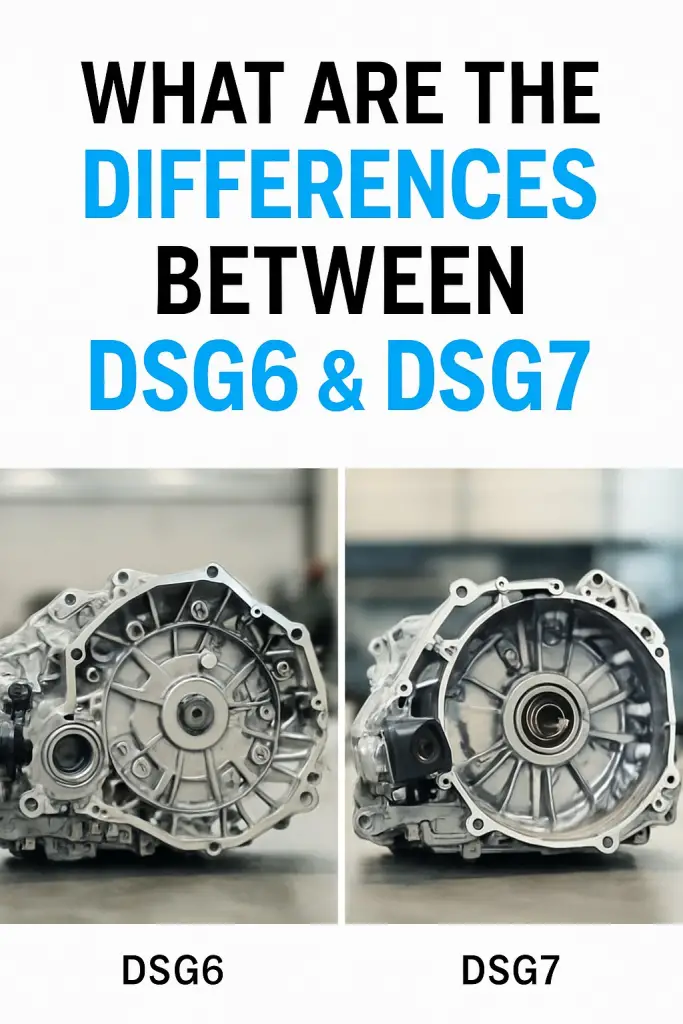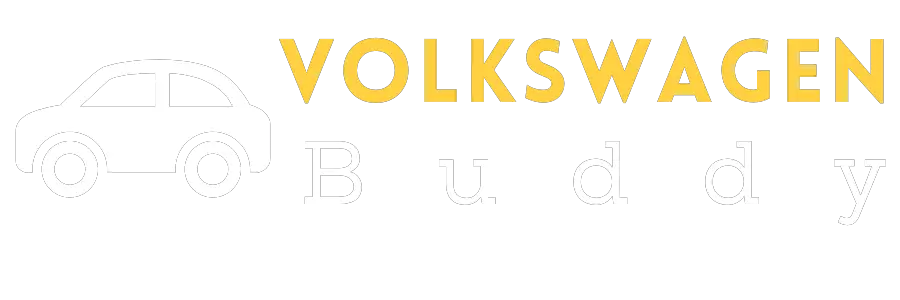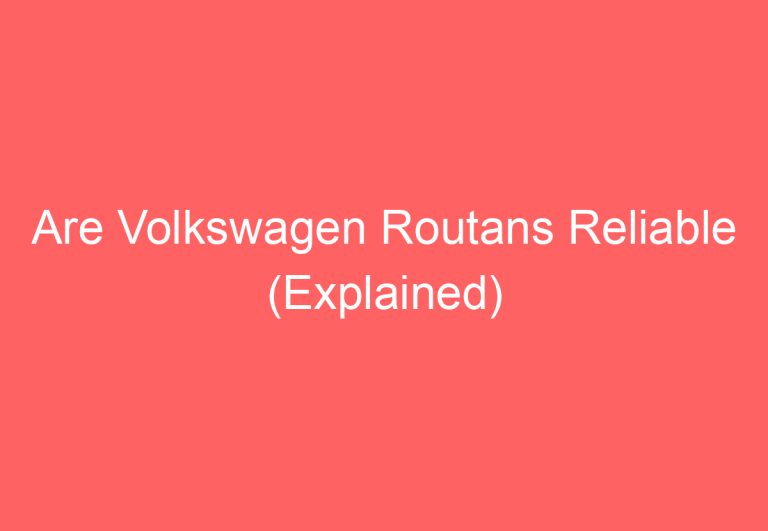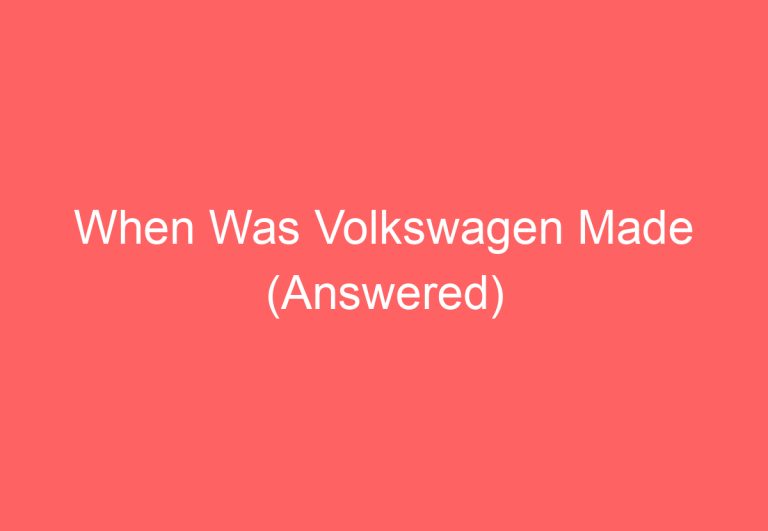What Are the Differences Between a DSG6 and DSG7?

So you’re wondering what separates the DSG6 from the DSG7?
Maybe you’re car shopping.
Maybe your buddy keeps bragging about his “smooth DSG7 shifts” and you want to know if he’s actually onto something or just flexing.
Either way, you’re in the right place.
I’ve driven both, worked on both, and yes… cursed at both.
Let’s break this down in plain English, no boring tech lectures.
First Things First – What’s a DSG?
DSG stands for Direct Shift Gearbox.
Think of it as a manual transmission with two clutches, but the computer does the work for you.
The big selling point? Fast gear changes and better efficiency than a traditional automatic.
Two main versions dominate VW Group cars:
- DSG6 – 6-speed dual-clutch
- DSG7 – 7-speed dual-clutch
Sounds simple, right? Well… not exactly.
DSG6 vs DSG7 – The Core Differences
Here’s the quick snapshot before we get into the juicy details:
DSG6
- 6 forward gears
- Wet clutch design
- Handles more torque
- Heavier, a bit less fuel efficient
DSG7
- 7 forward gears
- Dry clutch design (in most versions)
- Lighter, slightly more fuel efficient
- Less torque handling capability
Now let’s dive deeper into what those actually mean in real life.
Wet Clutch vs Dry Clutch – The Big Divide
This is probably the biggest technical difference between the two.
DSG6 – Wet Clutch
- The clutches are bathed in transmission fluid
- Better cooling under heavy load
- Smoother at low speeds
- Can handle more torque (often 350–400 Nm)
- Slightly higher maintenance costs due to fluid changes
DSG7 – Dry Clutch
- No fluid bath for the clutches
- Lighter and more efficient
- Cheaper to produce and maintain (in theory…)
- More prone to jerkiness in stop-and-go traffic
- Typically limited to around 250–300 Nm torque
Translation:
If you’re into performance or have a heavier car, DSG6 is your friend.
If you mostly drive a smaller, lighter car and care about fuel economy, DSG7 might be better.
Real-World Driving Feel
Here’s where the brochure numbers stop mattering and the seat-of-the-pants impressions kick in.
DSG6
- Smooth take-off: Feels more natural from a standstill.
- Confident under load: No weird hesitation when you floor it.
- Great for towing or spirited driving: No clutch overheating worries in normal use.
DSG7
- Snappy shifts: With seven gears, you’re always in the right RPM range.
- Fuel-friendly cruising: That extra gear drops revs on the highway.
- But… low-speed parking maneuvers can be jerky. Ever tried parallel parking and your car felt like it couldn’t decide if it wanted to move or stop? Yeah, that.
Reliability – The Part Everyone Cares About
Alright, let’s be real. You can love your gearbox, but if it’s always in the shop, you’ll start Googling “manual swap kit” pretty fast.
DSG6 Reliability
- Generally tougher and more durable
- Wet clutch helps with heat and wear
- Common issues: Mechatronic unit faults, clutch wear over high mileage
DSG7 Reliability
- Early versions had notorious clutch wear and mechatronic issues
- VW did software updates and design tweaks to fix most of it
- Still, it’s more sensitive to stop-start traffic and bad driving habits
IMO: If you’re buying used, I’d pick DSG6 every time for peace of mind. If you go DSG7, make sure it’s a later model with updated parts.
Maintenance – No Free Lunch Here
Both DSG6 and DSG7 need proper care. Skip it, and you’ll regret it.
DSG6 Maintenance
- Oil and filter change every 40,000 miles (or 60,000 km)
- Costs more, but keeps the wet clutch and mechatronics happy
DSG7 Maintenance
- No regular clutch oil changes for the dry type
- Still needs occasional mechatronic fluid check
- Cheaper routine maintenance, but repairs can be pricier if clutches go early
Which Cars Use Which Gearbox?
DSG6
- VW Golf GTI (older models)
- Passat with bigger engines
- Skoda Superb 2.0 TDI
- Audi A3 2.0 TDI / 2.0 TFSI
DSG7
- VW Polo GTI (newer)
- Golf 1.4 TSI / 1.5 TSI
- Skoda Octavia 1.4 TSI
- Audi A1 / A3 smaller engines
If the car’s got more torque and weight, chances are it’s got the DSG6. Smaller, lighter cars usually get the DSG7.
Fuel Efficiency – Who Wins?
On paper, the DSG7 wins thanks to the extra gear and lighter weight.
In real life? Depends on your driving.
- Highway cruising: DSG7 often sips less fuel.
- City driving: DSG6’s smoother low-speed behavior can sometimes match or beat DSG7’s efficiency because it’s not constantly jerking and re-engaging the clutches.
Performance Enthusiast’s Take
If you love spirited driving, here’s the short answer:
Go DSG6.
Why?
- Handles more torque without drama
- Less heat stress on clutches
- Feels more predictable when pushing hard
That’s not to say DSG7 is bad – in fact, on twisty roads in a light car, it’s brilliant. But if you’ve got power mods in mind, DSG6 is less likely to throw a tantrum.
My Personal Experience
I daily drove a Golf GTD with a DSG6 for three years. It never skipped a beat, even when I was heavy-footed on twisty back roads.
Later, I tested a friend’s Polo GTI with DSG7 for a week. It was fun, but in heavy traffic, the dry clutch felt… twitchy. The kind of twitchy that makes you wish for a manual just to avoid the awkward creeping.
Quick Comparison Table
| Feature | DSG6 | DSG7 |
|---|---|---|
| Gears | 6 | 7 |
| Clutch Type | Wet | Dry (mostly) |
| Torque Capacity | Higher | Lower |
| Weight | Heavier | Lighter |
| Fuel Economy | Slightly less efficient | Slightly more efficient |
| Low-Speed Smoothness | Better | Can be jerky |
| Maintenance | More frequent fluid changes | Less frequent, but watch clutches |
| Best For | High torque engines, spirited driving | Smaller engines, efficiency |
Which One Should You Pick?
Ask yourself:
- Do I value durability and smoothness over fuel economy? → DSG6
- Do I drive a small car and want better mileage? → DSG7
- Am I planning to tune the engine for more power? → DSG6, hands down
- Do I mostly cruise and avoid heavy traffic? → DSG7 can work fine
Final Thoughts
Both DSG6 and DSG7 have their place.
Neither is “bad” if you know what you’re getting.
I’d personally lean DSG6 for the torque handling and low-speed manners, but in a light hatch for mostly highway use, DSG7 makes sense.
At the end of the day, it’s about matching the gearbox to your driving style. Get that right, and you’ll be too busy enjoying the drive to care how many clutches are in play. 🙂






